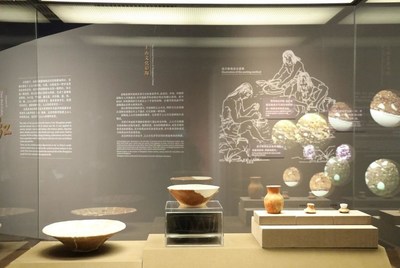Exhibition revealing early human civilization kicks off in Beijing
Comunicato Precedente

Comunicato Successivo

A total of nearly 200 exhibits were displayed at the exhibition, titled Rice, Origin, Enlightenment: Special Exhibition of Shangshan Culture Archaeological Discoveries in Zhejiang, to demonstrate the value and significance of the rice farming society represented by the Shangshan culture to the Chinese civilization, as well as its contribution to and influence on East Asia and the world.
The exhibits included a carbonized rice grain that dates back to 10,000 years ago, shards of painted pottery works, millstones and bedstones, as well as exquisite pottery pots and cups unearthed. They mirrored the social, economic, and cultural development when rice farming just started, as well as how Chinese village settlements lived and conducted social production in the early days.
A seminar on the civilization of China and Zhejiang was also held at the National Museum of China as an important part of the exhibition. It was joined by renowned archaeologists from China and abroad. Discussions were held on the value of the Shangshan culture in both history and the present days, as well as the culture's position in Chinese and human civilizations.

At the seminar, Professor Dorian Q Fuller from the University College London Institute of Archaeology introduced, from a global perspective, the value of Shangshan culture and its contribution to the Neolithic transformation. Li Liu, professor at the Stanford Archaeology Center, Stanford University expounded on the Shangshan culture and the origin of grain wine.
Located in the middle and lower reaches of the Yangtze River in China, the Shangshan site is so far the earliest known remains of rice farming in the world. As an origin of rice farming, the Shangshan culture occupies an important position in the formation of the Chinese civilization.
Photo - https://mma.prnewswire.com/media/1694893/Exhibition.jpg





